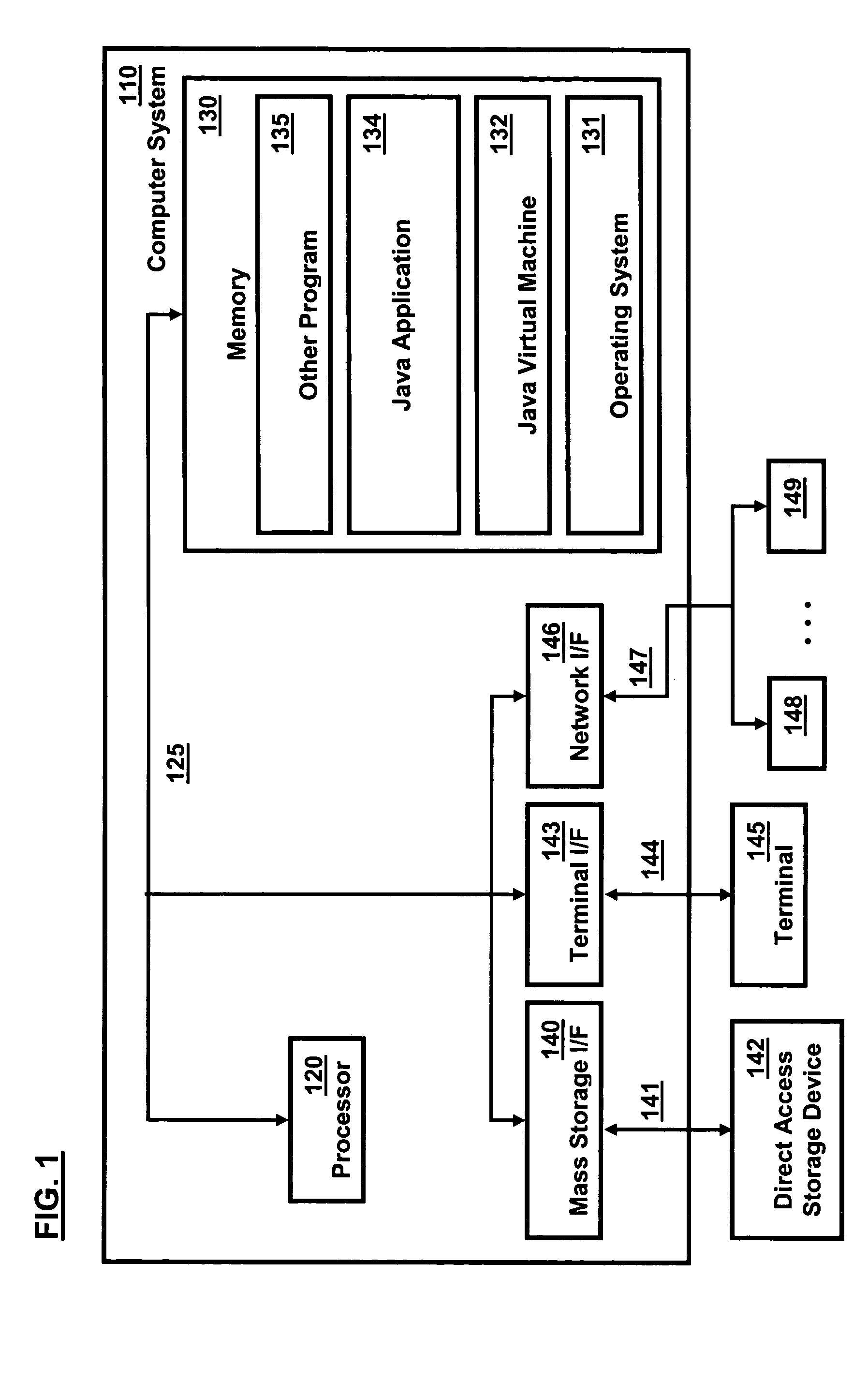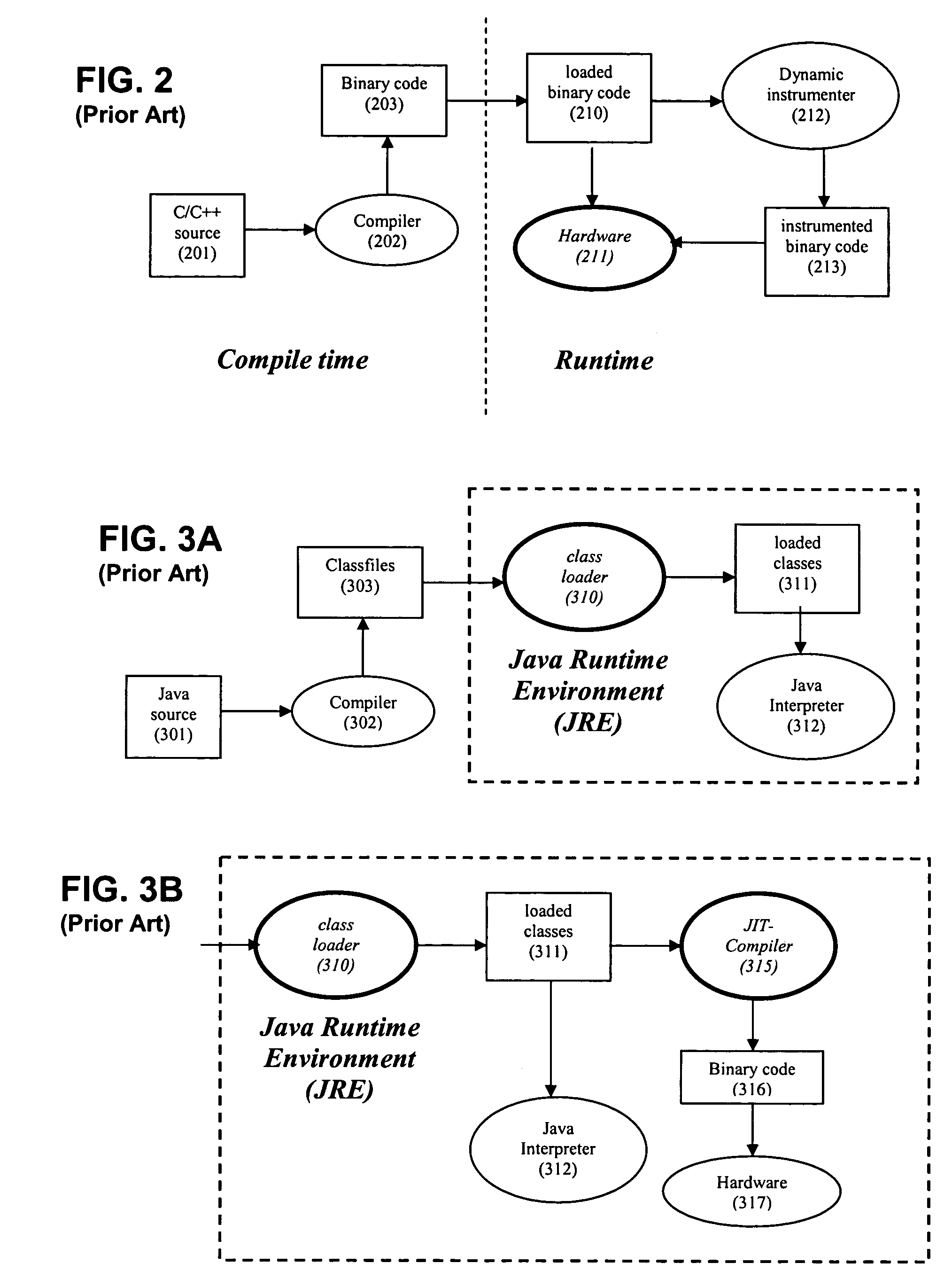Dynamic instrumentation for a mixed mode virtual machine
a virtual machine and dynamic instrument technology, applied in the field of computer software, can solve the problems of loss of adaptability of the non-writability of loaded classes, and loss of bytecode transformation (bt) as a means of runtime program transformation to the execution behavior
- Summary
- Abstract
- Description
- Claims
- Application Information
AI Technical Summary
Problems solved by technology
Method used
Image
Examples
Embodiment Construction
[0021]Turning now to a preferred embodiment of the invention, a just-in-time (JIT) compiler of a virtual machine (VM) is operable for dynamic transformation (and retransformation) of the VM intermediate code. As noted above, dynamic instrumentation has not been widely used in a virtual-machine environment such as Java. In Java, a class loaded by the Java Virtual Machine (JVM) is regarded as an immutable object, and modifying a loaded class violates the Java rules. However, the present invention permits one to dynamically transform VM applications like Java, even with classes already loaded and being executed. The technique according to a preferred embodiment uses the VM's just-in-time (JIT) compilation process for the transformation. Since the JIT compiler runs beneath the VM, invisible to the VM, dynamic transformation through the JIT compiler does not violate the VM (Java) rules like the immutability of loaded classes. Instead of transforming loaded classes, the JIT compiler is co...
PUM
 Login to View More
Login to View More Abstract
Description
Claims
Application Information
 Login to View More
Login to View More - R&D
- Intellectual Property
- Life Sciences
- Materials
- Tech Scout
- Unparalleled Data Quality
- Higher Quality Content
- 60% Fewer Hallucinations
Browse by: Latest US Patents, China's latest patents, Technical Efficacy Thesaurus, Application Domain, Technology Topic, Popular Technical Reports.
© 2025 PatSnap. All rights reserved.Legal|Privacy policy|Modern Slavery Act Transparency Statement|Sitemap|About US| Contact US: help@patsnap.com



